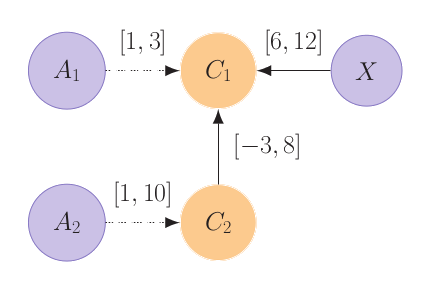About me

My name is Andrea Micheli, I am the head of the Planning, Scheduling and Optimization (PSO) research unit in the Digital Industry center at Fondazione Bruno Kessler, Italy.
I am the coordinator of the AIPlan4EU project and my research interests include Automated Planning and Scheduling, Formal Verification and Satisfiability Modulo Theory.
I am the main developer of the TAMER planner and of the PySMT library. Moreover, I coordinated the developemnt of the unified-planning library and I contributed to the development of the nuXmv model-checker.
Research interests
My primary interest is Artificial Intelligence Planning and Scheduling. I focused my research on the study of temporally expressive and uncontrollable domains in planning and I'm currently developing planning systems that take into account these aspects while reasoning.
I interested in the relationship between automated planning and Reinforcement Learning as a way for making planning more efficient and flexible.
I am also interested in Satisfiablility Modulo Theory especially in Linear and Non-linear Real Arithmetic and Quantified Theories as an enabling technology for my research in the area of optimal temporal planning.
Publications
Expressive Optimal Temporal Planning via Optimization Modulo Theory
in AAAI 2023
Decidability and complexity of action-based temporal planning over dense time
in Artificial Intelligence 2022
On the Expressive Power of Intermediate and Conditional Effects in Temporal Planning
in KR 2022
Deciding Unsolvability in Temporal Planning under Action Non-Self-Overlapping
in AAAI 2022
SMT-Based Model Checking of Max-Plus Linear Systems
in CONCUR 2021
Efficient Anytime Computation and Execution of Decoupled Robustness Envelopes for Temporal Plans
in TIME 2021
Olisipo: A Probabilistic Approach to the Adaptable Execution of Deterministic Temporal Plans
in TIME 2021
Synthesis of Search Heuristics for Temporal Planning via Reinforcement Learning
in AAAI 2021
Robust Execution of Deterministic Plans in Non-deterministic Environments
in INTEX 2020
Efficient Anytime Computation and Execution of Decoupled Robustness Envelopes for Temporal Plans
in INTEX 2020
Synthesis of Search Heuristics for Temporal Planning via Reinforcement Learning
in PRL 2020
Decidability and Complexity of Action-Based Temporal Planning over Dense Time
in AAAI 2020
Temporal Planning with Intermediate Conditions and Effects
in AAAI 2020
Validating Domains and Plans for Temporal Planning via Encoding into Infinite-State Linear Temporal Logic
in AAAI 2017
Dynamic Controllability of Disjunctive Temporal Networks: Validation and Synthesis of Executable Strategies
in AAAI 2016
pySMT: a Solver-Agnostic Library for Fast Prototyping of SMT-Based Algorithms
in SMT Workshop 2015
Compiling Away Uncertainty in Strong Temporal Planning with Uncontrollable Durations
in IJCAI 2015
The xSAP Safety Analysis Platform
in CoRR 2015
Compiling Away Uncertainty in Strong Temporal Planning with Uncontrollable Durations
in SPARK 2015
SMT-based Validation of Timed Failure Propagation Graphs
in AAAI 2015
Strong Temporal Planning with Uncontrollable Durations: a State-Space Approach
in AAAI 2015
The nuXmv Symbolic Model Checker
in CAV 2014, pages 334-342
Sound and Complete Algorithms for Checking the Dynamic Controllability of Temporal Networks with Uncertainty, Disjunction and Observation
in TIME 2014
Using Timed Game Automata to Synthesize Execution Strategies for Simple Temporal Networks with Uncertainty
in AAAI 2014
Kratos - A Software Model Checker for SystemC
in CAV 2011, pages 310-316
OthelloPlay: a plug-in based tool for requirement formalization and validation
in TOPI 2010, pages 59-59
Verifying SystemC: A software model checking approach
in FMCAD 2010, pages 51-59
Supporting Requirements Validation: The EuRailCheck Tool
in ASE 2009, pages 665-667
PhD Thesis
My PhD thesis titled "Planning and Scheduling in Temporally Uncertain Domains" has been successfully defended at the University of Trento, Italy on January, 19th 2016.
The thesis won the following awards and recognitions:
- the EurAI Best Dissertation Award 2015
- the "Marco Cadoli" prize for Young PhDs 2016 awarded by the Italian Association for Artificial Intelligence
- the FBK's best PhD award 2016
- the honorable mention at the ICAPS Best Dissertation award 2017
The thesis and the relative additional materials are available from the buttons below.
Teaching
Contacts
Embedded Systems Unit, FBK-ICT
Via Sommarive 18, 38123, Trento, Italy
